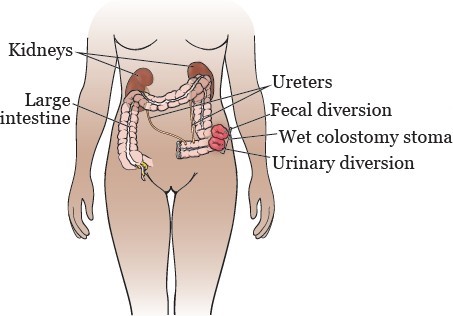A patient is being assisted to the bathroom for the first time after Caeserean delivery. A recent experience caused a sudden fall made the client end up at the hospital. The options for the practical nurse (PN) are:
Maximize resting and avoid undue pressure on the cesarean incision.
Return the patient to bed and maintain bed rest until the local flow stabilizes.
Adjust IV fluid flow rate and continue to monitor the local flow amount.
Withhold bladder emptying until the Foley catheter is removed and contract the fundus.
The Correct Answer is B
The patient experienced a sudden guard while being assisted to the bathroom, which led to their hospitalization. The most appropriate action for the practical nurse (PN) in this situation is to prioritize the patient's safety and well-being. Returning the patient to bed and maintaining bed rest allows for stability and minimizes the risk of further complications or injury. By providing a safe and controlled environment, the PN can monitor the patient's condition and collaborate with the healthcare team to determine the appropriate course of action moving forward.
Options a), c), and d) are not relevant or appropriate in this context.
Nursing Test Bank
Naxlex Comprehensive Predictor Exams
Related Questions
Correct Answer is C
Explanation
The client's question about whether the surgical opening will be visible suggests that they have concerns or misconceptions about the upcoming fecal diversion surgery. By reviewing the client's expectations of elimination after surgery, the PN can provide accurate information and address any anxieties or concerns the client may have.

The other options are not directly related to the client's question and are not the most appropriate actions to take in this situation:
A. Determining if this is the client's first indwelling catheter is unrelated to the client's question about the visibility of the surgical opening. It may be important to assess the client's history of urinary catheter use for other purposes, but it does not address the client's immediate concern.
B. Asking the client if they finished the bowel sterilization prescription is also unrelated to the visibility of the surgical opening. While bowel sterilization may be a part of the preoperative preparation for fecal diversion surgery, it does not address the client's questions and concerns.
D. Verifying that the client had nothing by mouth (NPO) for the past 24 hours is important for general preoperative care but does not address the client's specific question about the visibility of the surgical opening.
Correct Answer is D
Explanation
When a client's family member expresses concerns about the care provided, it is essential for the nurse to gather more information and understand the specific issues raised. By asking for a description of what happened during the night, the nurse can obtain details about the perceived inadequate care. This allows the nurse to gather accurate information, assess the situation, and address any legitimate concerns.
A. Explaining that all staff are doing their best may not address the specific issues raised by the daughter and may not provide a satisfactory resolution to her concerns.
B. Telling the daughter to talk with the unit's nurse manager can be an appropriate step, but it should come after gathering information about the situation. The nurse needs to have a clear understanding of what happened before involving the nurse manager.
C. Reassuring the daughter that the mother will get better care may not address her concerns and may not provide a solution to the perceived problem. It is important to gather more information before offering reassurance or making promises.
Whether you are a student looking to ace your exams or a practicing nurse seeking to enhance your expertise , our nursing education contents will empower you with the confidence and competence to make a difference in the lives of patients and become a respected leader in the healthcare field.
Visit Naxlex, invest in your future and unlock endless possibilities with our unparalleled nursing education contents today
Report Wrong Answer on the Current Question
Do you disagree with the answer? If yes, what is your expected answer? Explain.
Kindly be descriptive with the issue you are facing.
